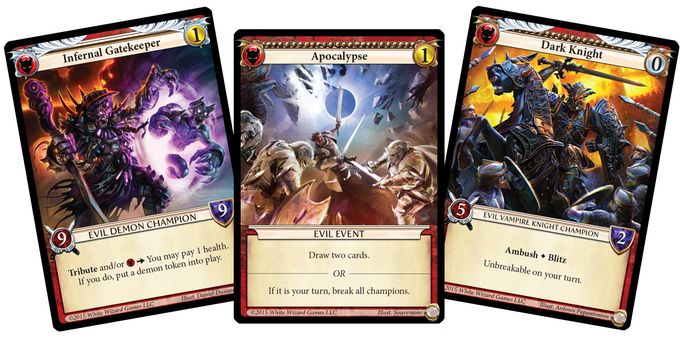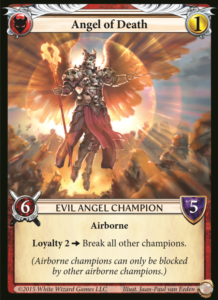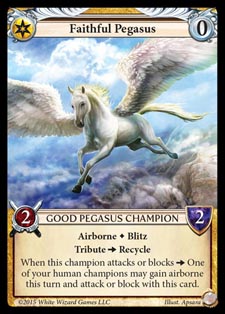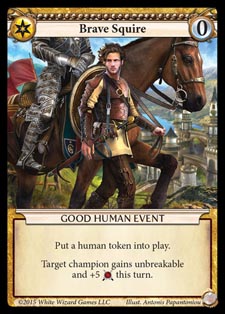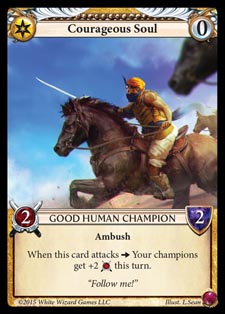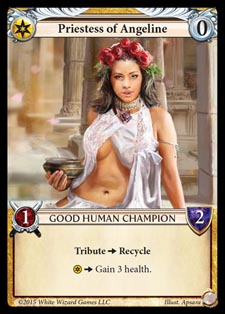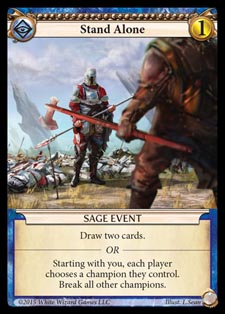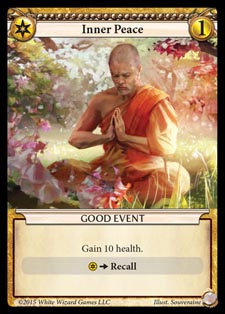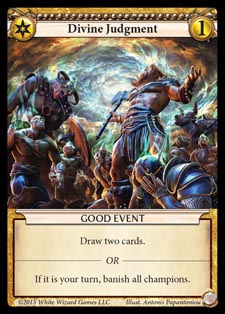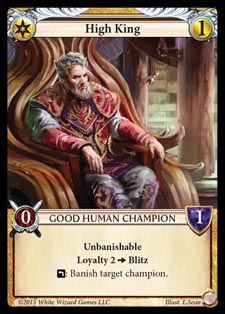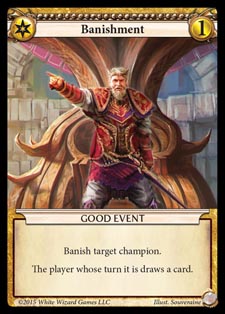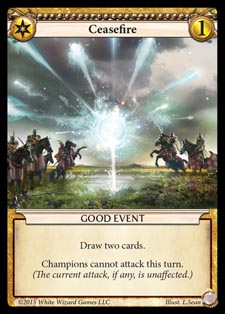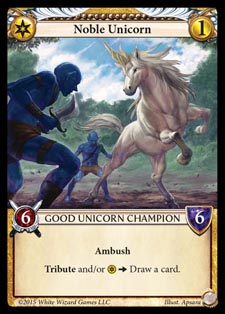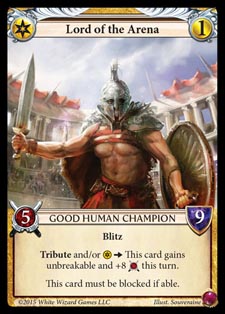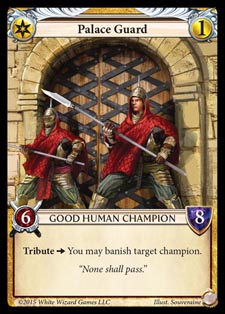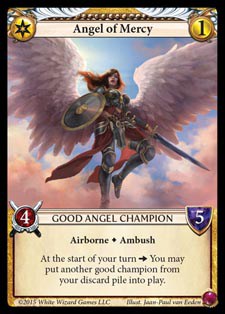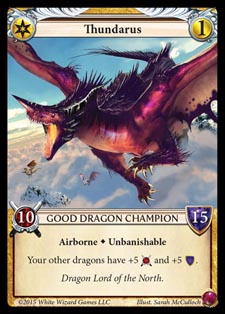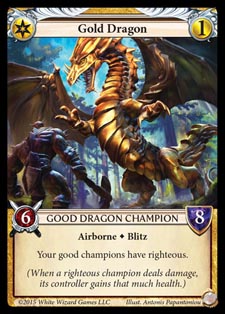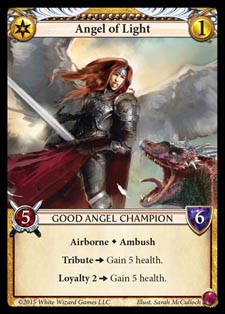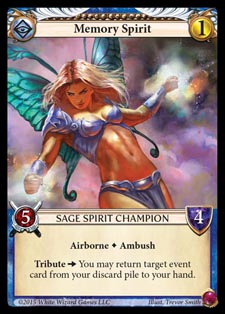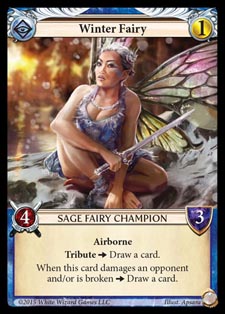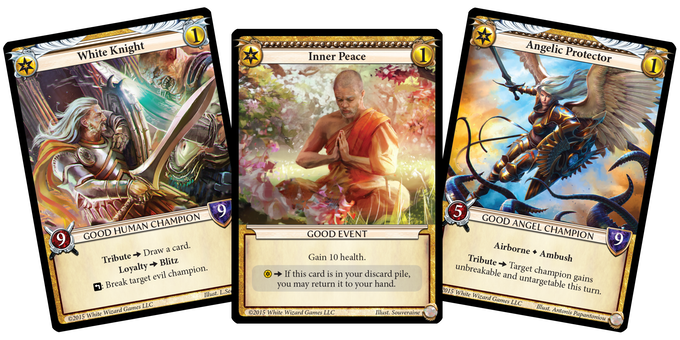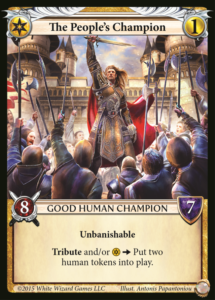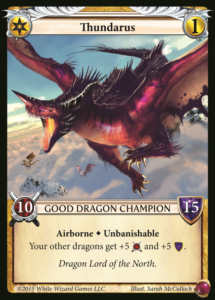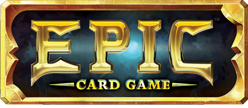Epic: Evil Deck

If you haven’t checked out the base set Evil analysis, do that now!
Epic decks are not required to stay “pure” colored. So when you talk about having an “Evil” deck, what you must know is what it means to be Evil. Evil is all about messing with your opponent so that you can strike back. Weaken them, minimize their plays and use your own to make a stand. You must choose an offensive strategy in this game and there are only really a few: you can swing in the air, freeze, swing wide, simplify the game for opportunity swings, breakthrough (+blitz) on the ground, or burn.Evil has a lot of options including burn (Soul Hunter and Blood Drinker), airborne (Succubus and Angel of Death), wide (Demon and Zombie token production), breakthrough (Trihorror), and control (myriad of kill cards). However, most of them would fail miserably as there are only 1-2 cards that can participate in the offensive strategy, leaving Evil high and dry most of the time and easily stopped. The strategies that they can most easily and consistently deploy are swinging wide and control. This actually makes for a deadly combination. Each time they use a spot-removal card, the field becomes filtered such that the opponent’s field is relatively weaker. Not just in number but in quality as well, since you as the Evil player want to target what hurts them the most.
As for the wide method, Evil excels at this. With good (and unbreakable) Silver champions as well as tons of token producers, it’s trivial to get this engine going. When attempting, you’ll want an easy way to get 3 Demons or 6 Zombies to try this. Force the opponent to block your unbreakables or big stuff, then attack individually with each token/silver to deal damage over what they can afford to block realistically (using groups to threaten kills where applicable). This method is extremely weak to board wipes. If a board wipe hits, it might not just stagnate your strategy but potentially force you to minus if you overextended to get your tokens and silvers out. In general, each gold is worth 5 zombies or 3 demons. In addition, if you used any of your spot-removal before the next board wipe, that also counts against cards that you minused. Be very aware of this as you play an Evil deck. Try a low-cost way of baiting out the first board wipe early. This can cause an opponent to waste a turn and leave you with free-reign to use your control and tokens for 7-8 turns if the game lasts that long.
However, you always have the ability to respond to threats. Don’t worry if an opponent board wipes after playing a threat and having it broken. This generally indicates that you have wrecked their main play and they’re doing damage control trying to drain your hand. That’s the moment you should immediately stop playing conservatively since you know they’ve used up a threat and a board wipe. Aggro hard.
Note about board wipes and this particular deck: This deck is not weak to board wipes even if its main offensive strategy can be. This is because of its ability to dodge AOEs. Any time you have lots of silvers with Blitz, you can easily recover from a just-played board wipe. The same goes for some golds with blitz and anything unbreakable on your turn. Trihorror also dodges board wipes due to its ability and Final Task can bring back Trihorror, unbreakable stuff or just whatever is needed. Corpse Taker can immediately return something after an opponent board wipes so you can just re-play it. If you play smart, growing your field back from a board wipe is trivial in the deck on purpose.
Legend for deck keypoints:
- OPP – Counts as playable on the opponent’s turn. This is essential to keeping good rhythm and affecting game play every single turn. Doesn’t count re-usable.
- DRW – Draws at least 2 cards, or is a draw engine. Required to keep playing cards every turn including on the opponent’s turn, especially if you’re board wiping.
- TKN – Used for anything that helps you swing wide (or produce Tokens which can also swing wide). Main offensive strategy. Doesn’t necessarily only mean “Tokens”.
- CTL – Control. Spot-removal used to control threats on the field and filter the opponent’s best Champions away.
- MVP – Don’t squander these as they’re your best cards. Deck has more MVPs than usual due to specific plays.
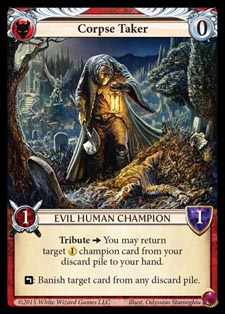
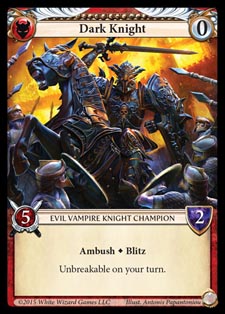
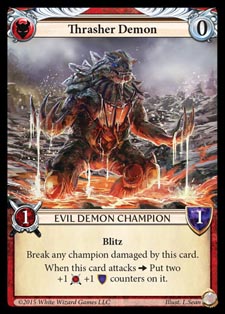
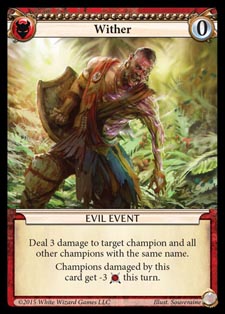
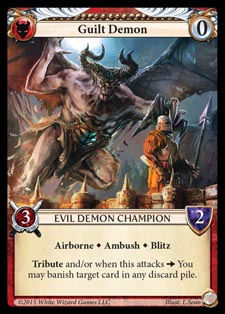
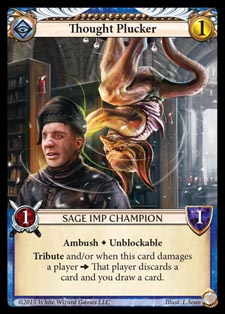
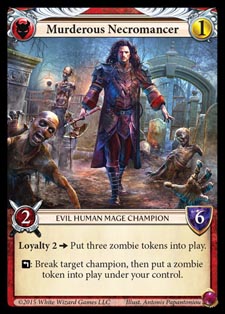
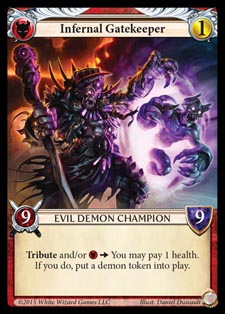
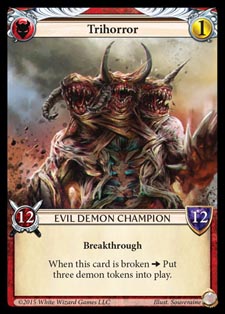

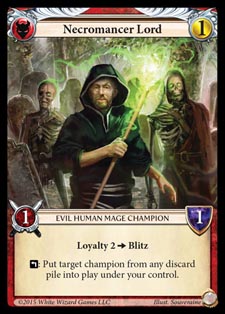
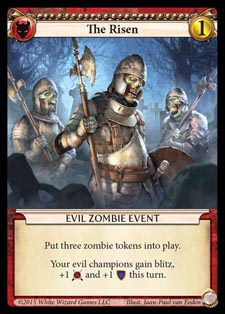
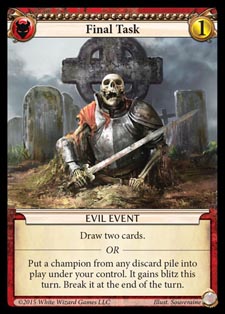
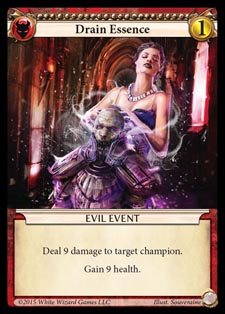
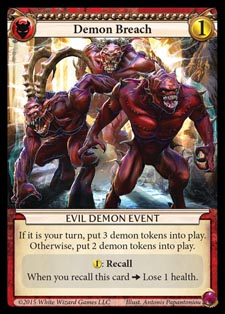
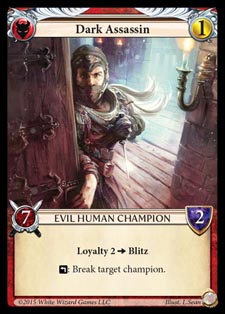
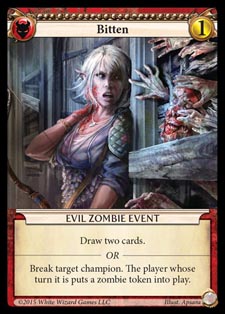

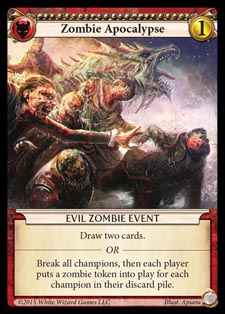
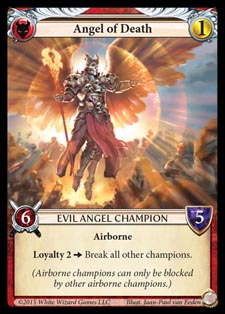
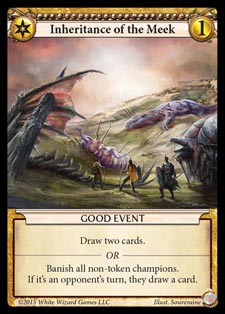
Key Point stats
Keypoint totals:
- OPP – 12 unique, 34 total cards. 57% of the deck works well on the opponent’s turn.
- TKN – 10 unique, 29 total cards. 48% of the deck swings wide.
- DRW – 7 unique, 21 total cards. 35% of the deck can give net hand advantage after it’s played.
- CTL – 7 unique, 20 total cards. 33% of the deck can filter the field and answer threats.
Intersection – 173% total, spillover (intersection) of 73%. Cards, on average have 1.7 of the deck’s key points on each card. Therefore each draw in this deck has a quality rating of 1.7.
Card Changes
Right now, there are only 6 cards (10% of the deck, or 1/10 draws) that can confound loyalty/ally.
- Loyalty/Ally – 6 unique, 17 total cards. 28% of the deck requires at least two other Evils.
- Removable – 1 unique, 2 total cards. 5% of the loyals can be removed if something better is used.
- Confound – 2 unique, 6 total cards. 10% of the deck screws up 28% of the deck. Low screw rate and basically only ever need the 3 minimum cards to activate a loyalty.
Removable Cards:
- Angel of Death. This card is great but basically exists for you to dodge your own AOE as explained before and then get an extra attacker out of it. Not quite synergistic and can be replaced by Avenging Angel (Good).
- Drain Essence. It’s pretty extra in this deck but works well for the purposes of healing. If you want something else that can help you stay alive while benefiting from existing control, try Drinker of Blood which also dodges your AOEs.
- Demon Breach. While it’s part of your attacking strategy, Demon Breach is just one of those cards that can easily be changed into something else without much loss occurring at all. It’s helpful but can sometimes fall flat. For something that really helps you swing wide, try Deadly Raid (Sage).
- Wither. Can be removed for the final copies of Deadly Raid and Avenging Angel if you don’t have all three of each in. Keep any remaining copies.
This is also covered in “Deck Stats” but here is a comprehensive list of the major cards recommended for this deck if you swap anything (within Base Set).
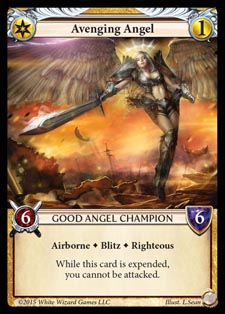
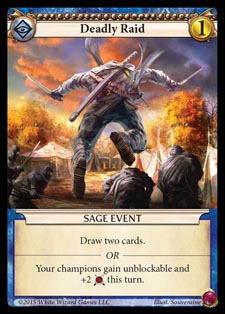
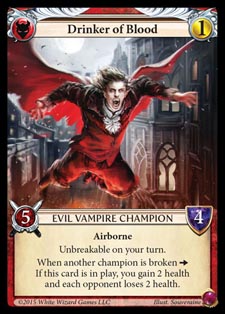
Listed in order of desirability. Check below for what to replace and the updated Deck Stats.
Replace:
- Angel of Death
- Wither
Deck Stats:
- No positive change. Purely for aggro and protection.
- Small amount of control omitted.
Replace:
- Demon Breach
- Wither
Deck Stats:
- OPP +5% (both are bad on opponent’s turn but this one has draw)
- DRW +5%
- Small amount of Control omitted.
- Overall +10% (change to intersection/card quality)
Replace:
- Drain Essence
- Wither
Deck Stats:
- OPP -3%
- CTL -3%
- Overall -6% (change to intersection/card quality)
- Change is purely for more bodies, more AOE dodge and draining/direct damage which is consistent
Stats with All Changes
- OPP – 59% of the deck works well on the opponent’s turn.
- TKN – 48% of the deck swings wide.
- DRW – 40% of the deck can give net hand advantage after it’s played.
- CTL – 30% of the deck can filter the field and answer threats.
Intersection – 177% total, spillover (intersection) of 77%. Cards, on average have 1.8 of the deck’s key points on each card. Therefore each draw in this deck has a quality rating of 1.8.
New loyalty problems:
- Loyalty/Ally – 5 unique, 15 total cards. 25% of the deck requires at least two other Evils.
- Confound – 4 unique, 12 total cards. 20% of the deck screws up 25% of the deck. Not a horrible screw rate, about a comfortable need of 4 cards in hand for Loyalty.
Stats with 2 Changes
Using only Avenging Angel and Deadly Raid, the stats become the following:
- OPP – 62% of the deck works well on the opponent’s turn.
- TKN – 48% of the deck swings wide.
- DRW – 40% of the deck can give net hand advantage after it’s played.
- CTL – 33% of the deck can filter the field and answer threats.
Intersection – 183% total, spillover (intersection) of 83%. Cards, on average have 1.8 of the deck’s key points on each card. Therefore each draw in this deck has a quality rating of 1.8.
New loyalty problems:
- Loyalty/Ally – 5 unique, 15 total cards. 25% of the deck requires at least two other Evils.
- Confound – 4 unique, 12 total cards. 20% of the deck screws up 25% of the deck. Not a horrible screw rate, about a comfortable need of 4 cards in hand for Loyalty.
This deck is easily frustrated by anything that can pull out a lot of healing while successfully fogging it. Thankfully, it’s difficult to actually pull something like that off against this deck. It can also become very easily frustrated by human token spam as it lacks much air or breakthrough.
